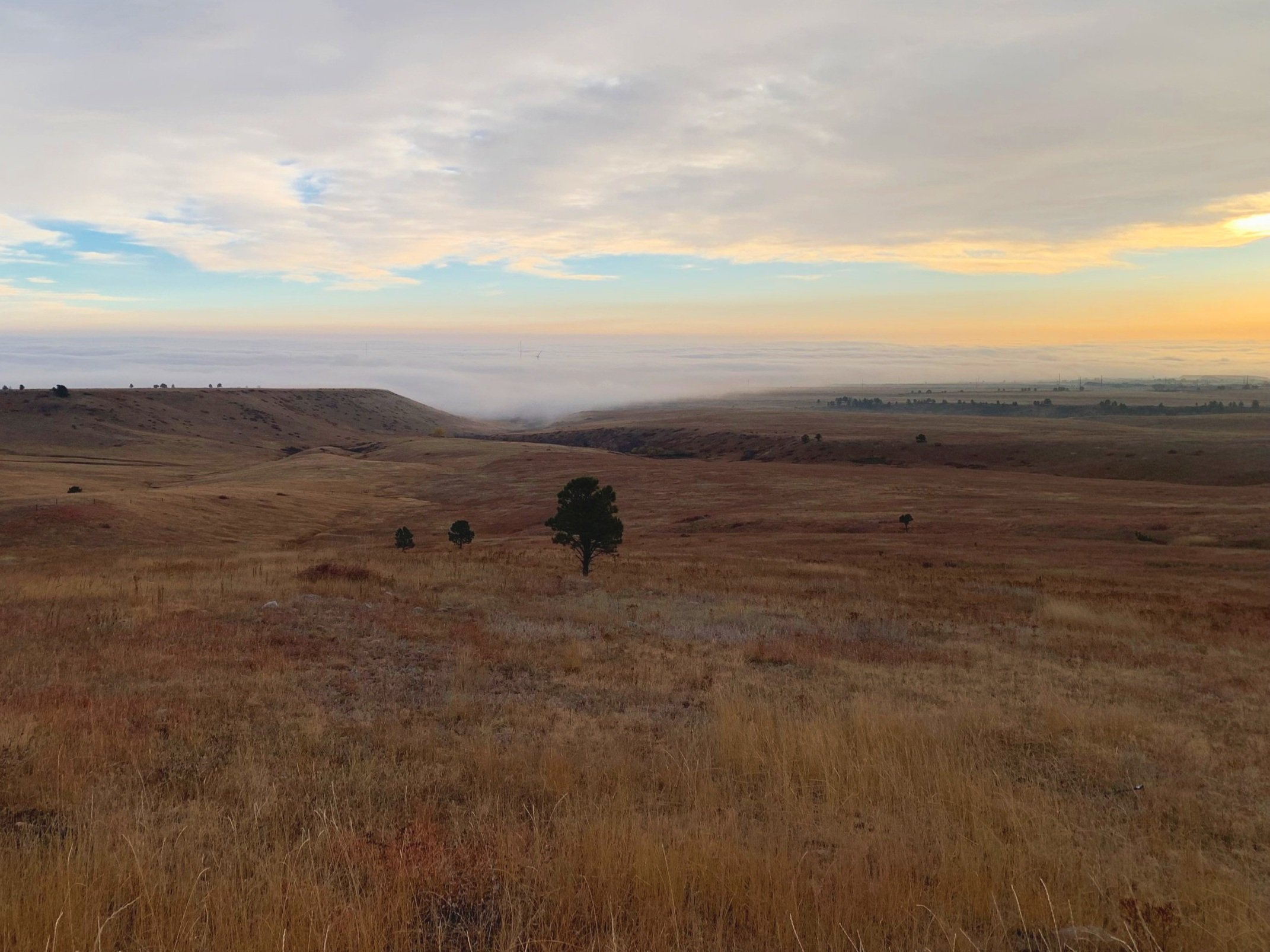Collaborative Research on Grassland Fuels and Management
Summary
We are very fortunate to be surrounded by open space. The grasslands that are near our communities provide a range of critical services, including outdoor recreation, hosting a huge diversity of plants and animals, storing carbon and nutrients, and stabilizing and building soils. However, as we saw in the Marshall fire, they also pose some risk from wildfire especially as climate change is creating conditions that favor extreme fire behavior more frequently.
There is a wide range of actions that could be taken to potentially reduce the risk of damaging grassland wildfires. These range from hardening homes to reducing fuels in key areas. However, from a fuels perspective, we know much less in grasslands compared to forested systems, partly because grassland fuels can be much more dynamic through time. This is because unlike forests, grasslands don’t often have many woody plants and so the productivity can greatly increase in wetter springs and summers.
The effectiveness and consequences of actions that can be taken to reduce fuels are relatively untested. We don’t know which methods might be best suited to reduce fuels at the right time and at the right scale, nor do we know a lot about the potential tradeoffs between fuel reduction and other important grassland functions. Some example questions we hope to address:
Does grazing in the spring reduce or augment plant growth during the summer?
For how many years can prescribed fire meaningfully reduce thatch buildup?
To what extent does reducing fuels influence fire behavior under a range of weather conditions?
Objectives
In this project we aim to better understand how grassland fuels vary across space and through time and the effectiveness and consequences of potential management methods for reducing fire risk. We will use fire behavior models and locally measured fuel information to evaluate how different fuel management scenarios might affect wildfire risk. Overall, the aim of this research is to help landowners and land managers to make informed decisions about prioritizing fuel management actions to reduce wildfire risk and weighing the benefits and consequences of these actions. Specifically, we have three main objectives.
objective 1
We are surveying grassland fuels using an extensive network of permanent monitoring plots where we are measuring biomass accumulation, plant community composition, and soil characteristics to better understand how grassland fuels vary across space, through time, and under different environmental contexts. We are measuring all the characteristics needed to modify fuel models for fire behavior modeling.
objective 2
We are testing three potential fuel management methods that are being considered by land managers. We will impose grazing, mowing, and prescribed fire treatments, along with control plots at eight locations to see how these interventions affect fuel accumulation and other critical grassland services like plant diversity, soil health, and water retention. We expect that grazing and prescribed fire will be the most sustainable actions that can reduce fuels at the appropriate times while maintaining or promoting grassland services.
objective 3
We are using what we learn from the first two objectives to inform fire behavior modeling and assess the extent to which fuels vs. topography and weather affect fire behavior. We will also test different fuel treatment scenarios to evaluate their effectiveness for reducing risk to the wildland urban interface.
Our Partners
This project was inspired by questions from local land management agencies and it is being developed and implemented in close collaboration with the following partners. This work would not be possible without their support in everything from funding, determining the right questions to ask, implementing our experimental treatments, and communicating with interested parties.
more information
For more information about local grassland management and fire see this resource assembled by the Boulder County Fireshed Grasslands Working Group.
We are also hosting a virtual “Lunch and Learn” about this project with the Town of Superior on August 14 2024 at 11:30 AM. See more details here.















